GANESHA AWAKENING LIMITED EDITION PRINT SYMBOLISM
The Hindu deity Ganesha has much symbolism. Lord of beginnings, Lord of obstacles, abundance, wisdom, and creativity. In this painting the inspiration is awakening – an elevation of consciousness.
In traditional Hindu iconography every part of the painting has a symbolic meaning. This painting is a modern, and western version of the deity. As I approach each painting as a meditation and devotional practice, learning the traditional meanings has helped me to bring greater awareness to every aspect of the painting, and therefore land greater presence and clarity with the piece. At the same time, my direct experience in working with forces of consciousness has given me my own insigths.
Below is a list of the symbolsim of this painting which I originally created as a commission for a client. Some of the descriptions I have used references which I have cited below. Others are my reflections from direct experience. And a couple of the descriptions are based on conversations with my late teacher, Samuel Sagan during a project creating a Ganesha portrait for Hidden Valley retreat center.
To order a Ganesha Awakening Limited Edition print click here.
I hope that this list can bring greater enjoyment and illumination to your experience of Ganesha Awakening!
Please let me know your thoughts and your own insights by leaving your comments below.
 LOTUS THRONE
LOTUS THRONE
“The lap of the divine feminine out of which all creation springs.” (Jansen, 2007, 47)
Forces: emergence, creation.
 SEATED POSITION
SEATED POSITION
Virasana – One leg lies curved on the lotus throne and the other leg hangs down to the ground. This position represents a god who has revealed himself to be a hero in the battle against asuras. (Jansen, 2007, pg 17)
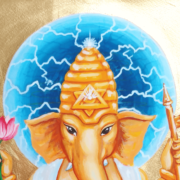 NIMBUS
NIMBUS
“This halo, or prabhamandala, is often decorated with a pattern of leaves originating form the sacred tree, the symbol of cosmic power. Sometimes there is a clearly identifiable circle of flames, as in the dancing god Shiva-Nataraja.” (Jensen, 2007, pg19)
The deep blue nimbus behind the helmet is a “reflection of the encapsulation of the sky of the world of the gods through the helmet.” (Samuel Sagan, 2015)
 HELMET
HELMET
Symbolizing the super-mental forces of consciousness of the deity in the centers of energy above the head. The gemstone on the front relates to the 3rd eye and forces of non-physical vision. The point of light at the top of the helmet reflects a concentration of these forces. The lightning bolts radiating from the helmet reflect sudden knowing, inspiration, flashes of insight and connection to archetypal forces of the sky in the world of the gods.
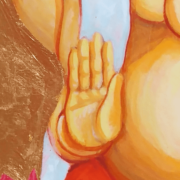 HAND GESTURES
HAND GESTURES
“The hand mudras are ‘the language of the gods’ thought which there is a sophisticated expression of intent, feelings, and qualities.
Abhaya – the right hand raised with the palm of the hand facing forwards. Indicates blessing, protection and reassurance.
Kataka – holding a lotus flower; this position invites the devotee to make the gift of a flower.” (Jansen, 2007, pg 21, 25)
 AXE
AXE
“(Parashu) The weapon that conquers the dark and ignorance and in this way liberates man from all ties of all worldly matters. ”
(Jansen, 2007, pg 40)
Forces: clarifying, cutting through, revealing truth.
 LOTUS FLOWER
LOTUS FLOWER
“The mother’s lap from which all of creation emerges. The sun. Eternal renewal. Bud – virginity, innocence, purity, potential. Stem – all life comes from water. Leaf – the fertility of earth.”(Jansen, 2007, pg 47)
Forces of emergence, transformation.
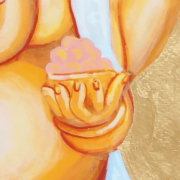 SWEET/FOOD
SWEET/FOOD
It’s often an attribute of Ganesha. Some say it’s symbolic of the sweetness of life.
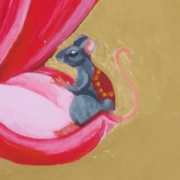
MOUSE VAHANA
Vāhana means vehicle in Sanskrit. Often Ganesha is pictured riding on a mouse, or the mouse at his feet in the scene. The mouse symbolizes forces of nature that can easily get into trouble! (Remember any time that a mouse has gotten into your house and wreaked havoc in the pantry?) and the symbolism is a conquering of these forces and turning the perseverance, ingenuity, boldness and cunning towards spiritual purposes. There are myths in the Puranas of asuras that Ganesha defeated in battle becoming his mouse vāhana. (Jagannathan, Krishna, 2006, pg 20) Often a vāhana will have a devotional relationship to the deity, for example Nandi the Bull who is the vāhana of Lord Shiva.
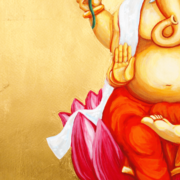
FABRIC/GARMET
In this case the fabric represents a “fabric of consciousness” or even a vehicle woven of light. Fine and light with jewels, relates to the self luminous of the mind outside of ignorance.
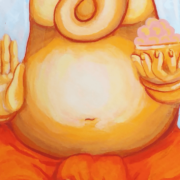 BIG BELLY
BIG BELLY
The large belly has several aspects of symbolism. Interestingly in Sanskrit, guru, as in ‘spiritual teacher’ or ‘one who spreads enlightenment’ also means heavy. Abundance, creativity, power and expansion are also reflected in the archetypal form of Ganesha’s large belly.
Forces: power, creativity, abundance, fullness.
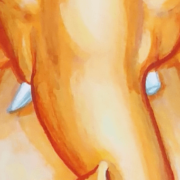 BROKEN TUSK
BROKEN TUSK
The broken tusk is mentioned in a several different myths. In some the tusk is used as a weapon while fighting asuras. In another myth the tusk is used as a creative tool while Ganesha scribes the mahabarata for sage Vyasa. (Jagannathan, Krishna, 2006, pg 21)
Forces: sacrifice, weapon, creative tool.
 GOLD
GOLD
The symbolism of gold, the sun, and divinity are deeply linked by virtually all civilizations on earth. (Sagan, 1996, pg 16)
Solar archetype, royalty, the divine. The fiery consciousness of the world of the gods. Forces: cosmic fire.
REFERENCES
Eva Rudy Jansen, 2007, The Book of Hindu Imagery. AH Haarlem, The Netherlands: Binkey Kok Publications.
Shakunthala Jagannathan, Nanditha Krishna, 2006, Ganehsa the Auspicious, the Beginning. Mumbi, India: Vakils, Feffer & Simons Pvt. Ltd.
Samuel Sagan, 1996, Planetary Forces Alchemy & Healing. Sydney Australia: Clairvision


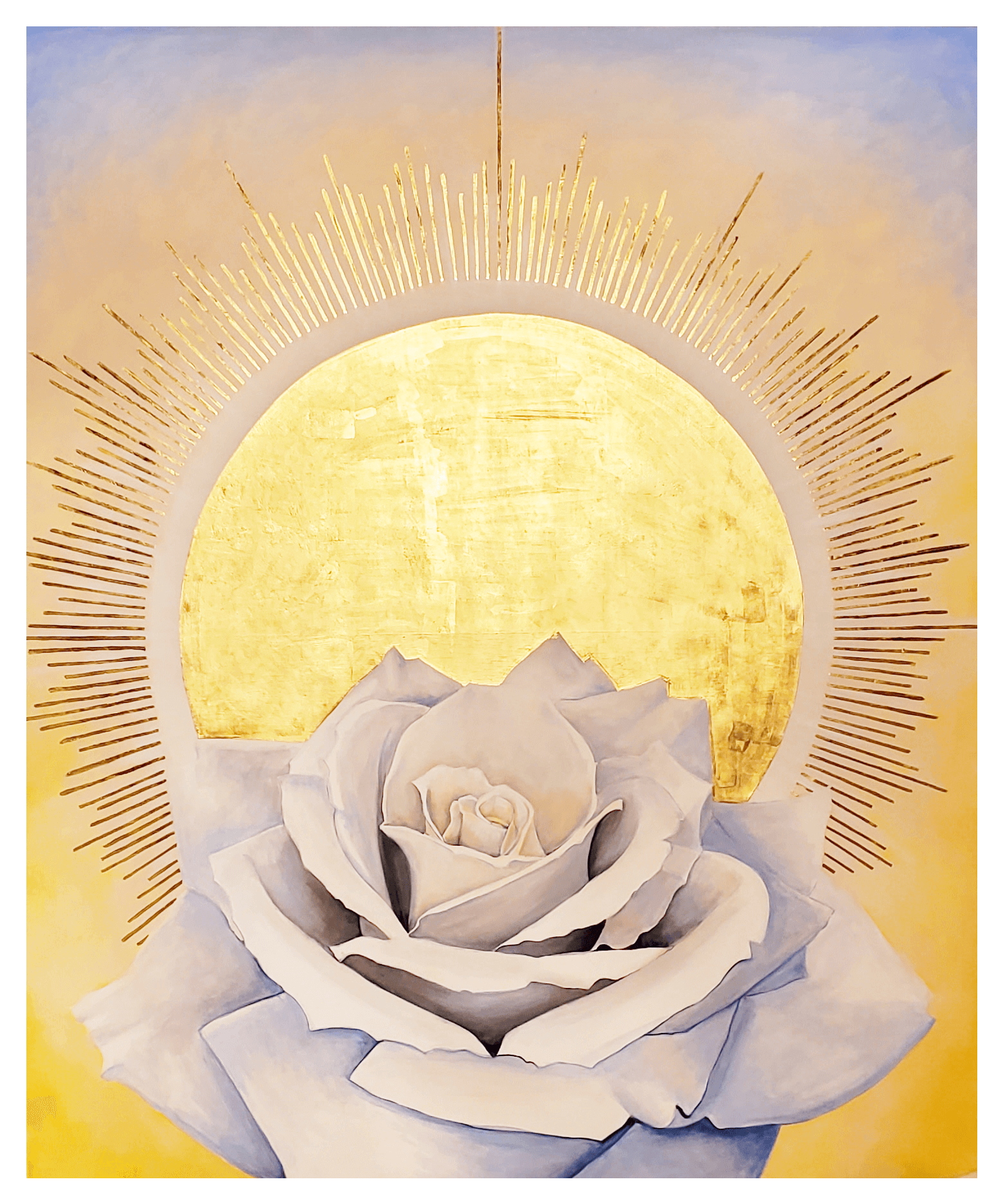
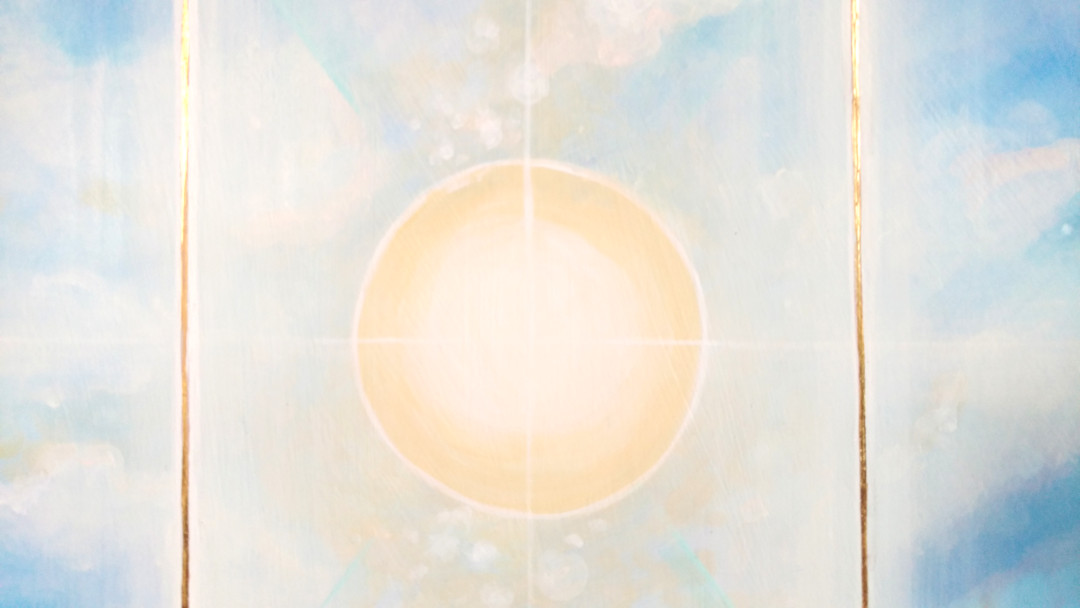
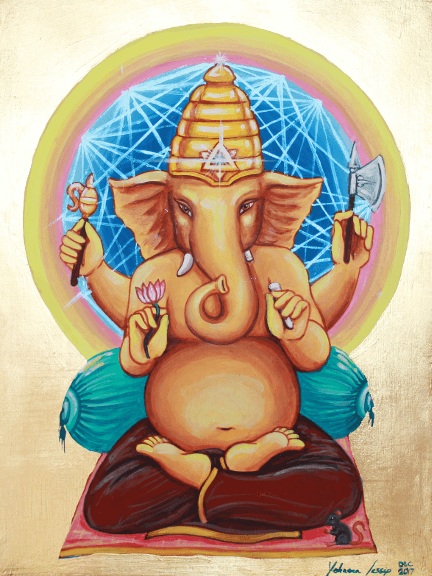
 2018 Yohanna Jessup
2018 Yohanna Jessup